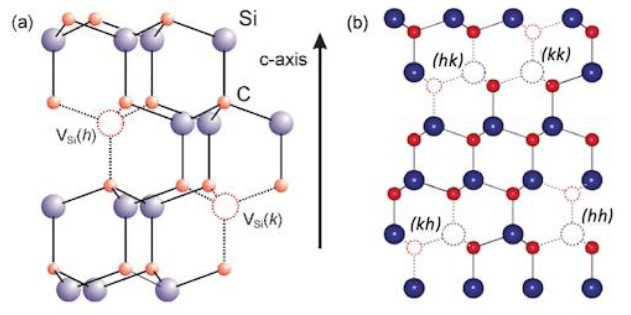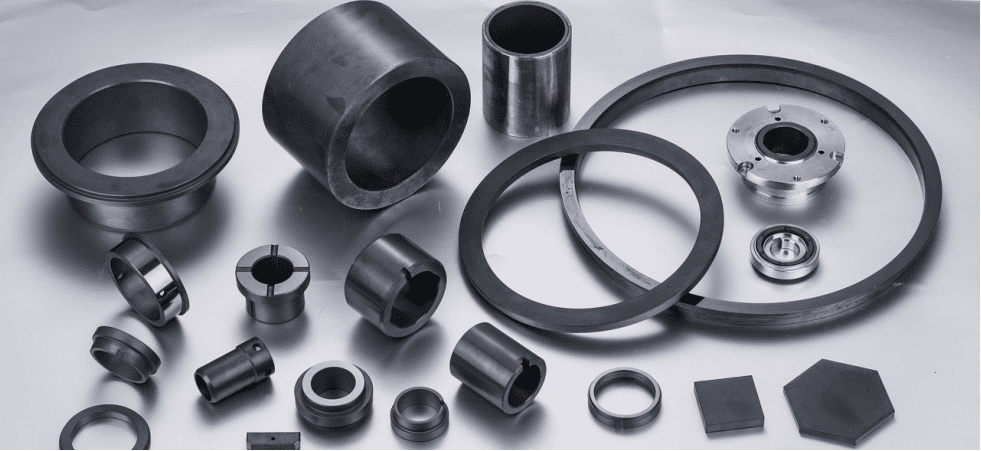
- English
- Español
- Português
- русский
- Français
- 日本語
- Deutsch
- tiếng Việt
- Italiano
- Nederlands
- ภาษาไทย
- Polski
- 한국어
- Svenska
- magyar
- Malay
- বাংলা ভাষার
- Dansk
- Suomi
- हिन्दी
- Pilipino
- Türkçe
- Gaeilge
- العربية
- Indonesia
- Norsk
- تمل
- český
- ελληνικά
- український
- Javanese
- فارسی
- தமிழ்
- తెలుగు
- नेपाली
- Burmese
- български
- ລາວ
- Latine
- Қазақша
- Euskal
- Azərbaycan
- Slovenský jazyk
- Македонски
- Lietuvos
- Eesti Keel
- Română
- Slovenski
- मराठी
- Srpski језик
What is hot pressed SiC ceramics?
2024-10-24
What is Silicon Carbide Ceramics?
Silicon carbide ceramics (SiC) is an advanced ceramic material containing silicon and carbon. As early as 1893, artificially synthesized SiC powder began to be mass-produced as an abrasive. The prepared silicon carbide grains can be sintered to form very hard ceramics, which is SiC ceramics.

SiC Ceramics Structure
SiC ceramics have the excellent characteristics of high hardness, high strength and compressive resistance, high temperature stability, good thermal conductivity, corrosion resistance, and low expansion coefficient. SiC ceramics are currently widely used in the fields of automobiles, environmental protection, aerospace, electronic information, energy, etc., and have become an irreplaceable important component or core part in many industrial fields.
How to obtain SiC ceramics?
At present, the preparation process of silicon carbide ceramics is divided into reaction sintering, pressureless sintering, hot pressed sintering and recrystallization sintering. Reaction sintering has the largest market and low production cost; pressureless sintering has high cost but excellent performance; hot pressed sintering has the best performance but high cost, and is mainly used in high-precision fields such as aerospace and semiconductors; recrystallization sintering produces porous materials with poor performance. Therefore, SiC ceramics used in the semiconductor industry are often prepared by hot pressed sintering.
The relative advantages and disadvantages of hot pressed SiC ceramics(HPSC) compared to the other seven types of SiC:

Main markets and performance of SiC by different production methods
Preparation of SiC ceramics by hot pressed sintering:
• Raw material preparation: High-purity silicon carbide powder is selected as the raw material, and it is pre-treated by ball milling, screening and other processes to ensure that the particle size distribution of the powder is uniform.
• Mold design: Design a suitable mold according to the size and shape of the silicon carbide ceramic to be prepared.
• Mold loading and pressed: The pre-treated silicon carbide powder is loaded into the mold, and then pressed under high temperature and high pressure conditions.
• Sintering and cooling: After the pressed is completed, the mold and the silicon carbide blank are placed in a high-temperature furnace for sintering. During the sintering process, the silicon carbide powder gradually undergoes a chemical reaction to form a dense ceramic body. After sintering, the product is cooled to room temperature using an appropriate cooling method.
![]()
Conceptual diagram of hot pressed silicon carbide induction furnace:
• (1) Hydraulic press load vector;
• (2) Hydraulic press steel piston;
• (3) Heat sink;
• (4) High-density graphite load transfer piston;
• (5) High-density graphite hot pressed die;
• (6) Graphite load-bearing furnace insulation;
• (7) Airtight water-cooled furnace cover;
• (8) Water-cooled copper induction coil pipe embedded in the airtight furnace wall;
• (9) Compressed graphite fiberboard insulation layer;
• (10) Airtight water-cooled furnace;
• (11) Hydraulic press frame load-bearing lower beam showing force reaction vector;
• (12) HPSC ceramic body
Hot pressed SiC ceramics are:
• High purity: 0.98% (single crystal SiC is 100% pure).
• Fully dense: 100% density is easily achieved (single crystal SiC is 100% dense).
• Polycrystalline.
• Ultrafine grain Hot pressed SIC ceramics microstructure easily achieves 100% density. This makes Hot pressed SIC ceramics superior to all other forms of SiC, including single crystal SiC and direct sintered SiC.
Therefore, SiC ceramics have superior properties that surpass other ceramic materials.
In the semiconductor industry, SiC ceramics have been widely used, such as silicon carbide grinding discs for grinding wafers, Wafer Handling End Effector for transporting wafers, and parts in the reaction chamber of heat treatment equipment, etc.
SiC ceramics are playing a huge role in the entire semiconductor industry, and with the continuous upgrading of semiconductor technology, they will occupy a more important position.
Now, lowering the sintering temperature of SiC ceramics and finding new and cheap production processes are still the research focus of material workers. At the same time, exploring and developing all the advantages of SiC ceramics and benefiting mankind is the primary task of VeTek Semiconductor. We believe that SiC ceramics will have broad development and application prospects.
Physical properties of VeTek Semiconductor Sintered Silicon Carbide:
Property
Typical Value
Chemical Composition
SiC>95%, Si<5%
Bulk Density
>3.07 g/cm³
Apparent porosity
<0.1%
Modulus of rupture at 20℃
270 MPa
Modulus of rupture at 1200℃
290 MPa
Hardness at 20℃
2400 Kg/mm²
Fracture toughness at 20%
3.3 MPa · m1/2
Thermal Conductivity at 1200℃
45 w/m .K
Thermal expansion at 20-1200℃
4.51 ×10-6/℃
Max.working temperature
1400℃
Thermal shock resistance at 1200℃
Good
VeTek Semiconductor is a professional Chinese manufacturer and supplier of High purity SiC wafer boat carrier, High Purity SiC Cantilever Paddle, SiC Cantilever Paddle, Silicon Carbide Wafer Boat, MOCVD SiC coating susceptor and Other Semiconductor Ceramics. VeTek Semiconductor is committed to providing advanced solutions for various Coating products for the semiconductor industry.
If you have any inquiries or need additional details, please don't hesitate to get in touch with us.
Mob/WhatsAPP: +86-180 6922 0752
Email: anny@veteksemi.com




